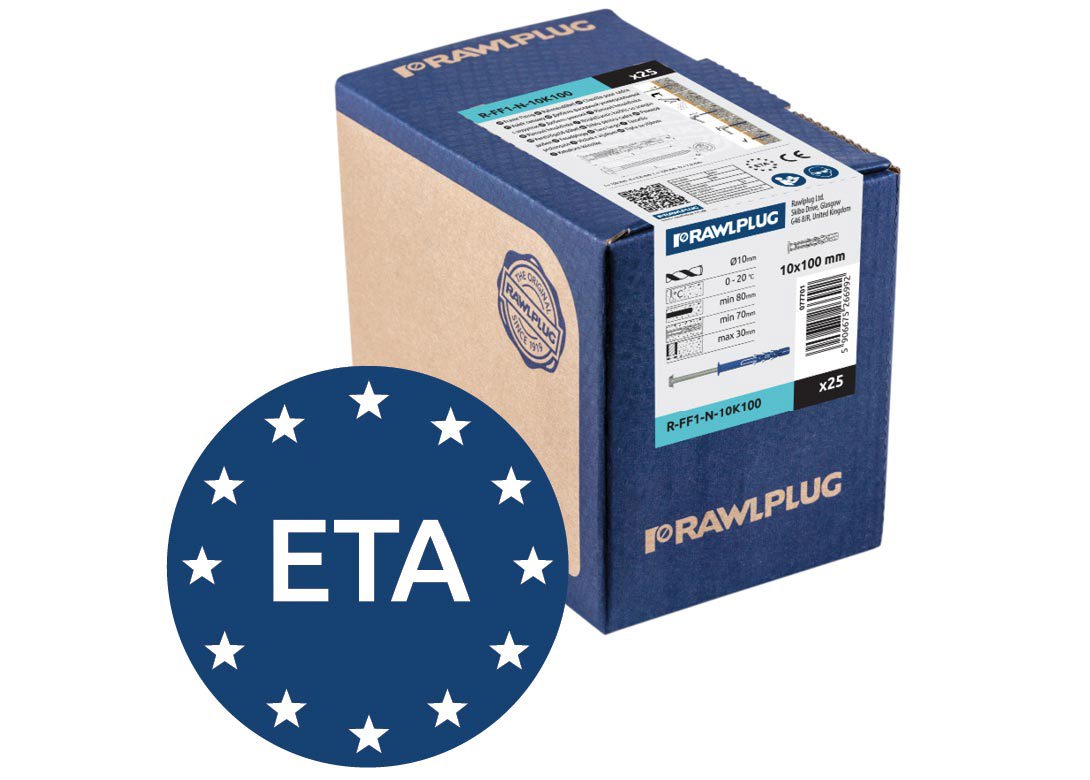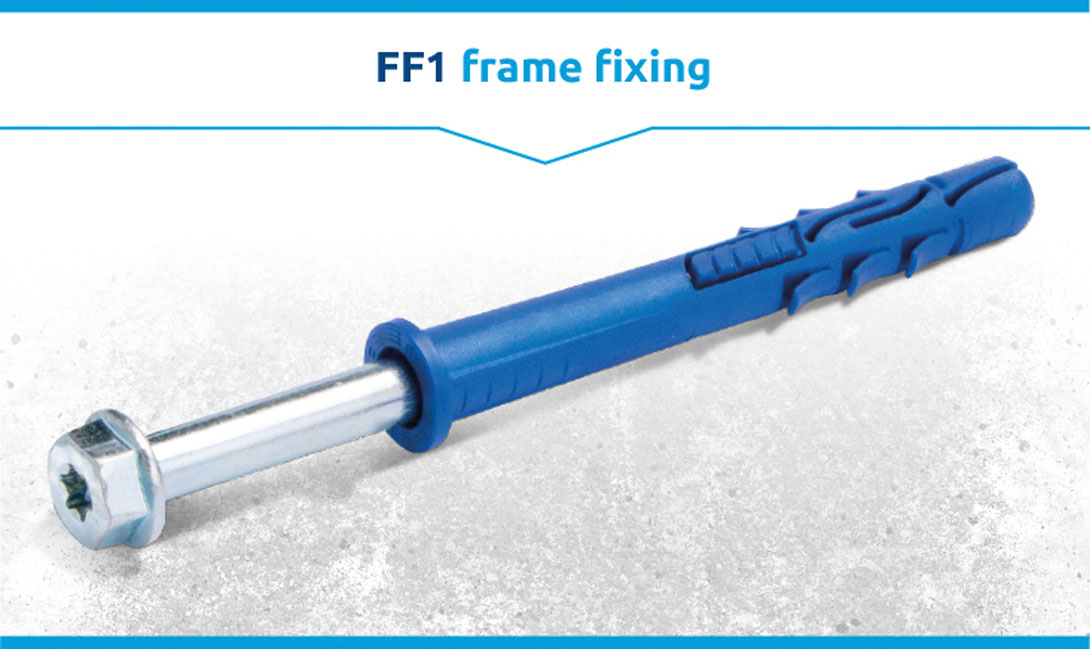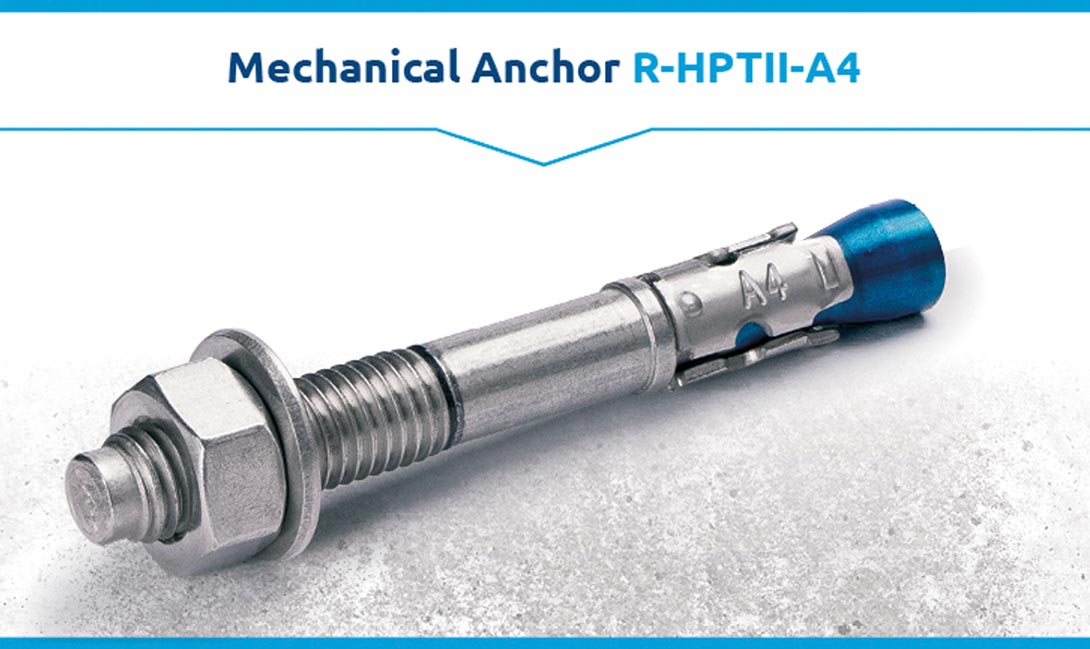
By Magdalena Grzelak, chief communication officer, Rawlplug
Fixings and fasteners, even if considered to be the most professional products of this category available in the market, require certification to prove their quality and to confirm that they satisfy or surpass market expectations. ETA stands for European Technical Assessment, being a proof of excellent collaboration between R&D and production areas. But is it necessary?
Document for actual manufacturers exclusively
A European Technical Assessment is by definition a document that determines performance characteristics declared by the manufacturer, described either descriptively or in a breakdown into levels or classes – issued upon the manufacturer’s request by an authorised certification body specialised in technical assessment.
Theoretically, it all seems very simple, but in practice, it is a very complex, time-consuming and costly process. So why do internationally recognised manufacturers of fixings and fasteners decide to apply for it? In a decided majority of markets, the ETA provides grounds to decide whether or not the given product is to be used in construction investments, irrespective of their scale.
There is more to it, since the law prevents companies from introducing products not accompanied by appropriate technical documentation into trade. However, in the UK, for instance, where construction experts are very informed and highly specialised in assessing parameters of fixings, such evidence is not expected, and yet the best brands still invest their time and money in an effort to obtain the European Technical Assessment certificates for their products.
Why is that? This is a means to document the safety, top quality and professionalism of products, while the ETA is an exclusive privilege of their actual creators.
Crowning of the best parameters
The European Technical Assessment is a document that certifies that the given product actually responds to the market needs, or that it even surpasses them in terms of the best technical parameters – enabling it to be used in different and even the most demanding applications.
Those that call for special attention are the certificates that document not only the diversity of substrates and installation methods, but also product application variants, e.g. depending on highly specific weather conditions or location of special requirements, such as seismically active regions. For example, certified fixings are suitable for use in a wide spectrum of applications in corrosive environments of classes from C1 to C5/I/M owing to the fact that their specifications account for numerous variants of anticorrosive coatings and grades of steel the given fixing or fastener is made of.
The ETA means that installers can use our fasteners in damp or even water flooded holes, in both cracked and non-cracked concrete, in combination with rebars and rods made of materials starting from electroplated, zinc flake coated or hot dip galvanised carbon steel, to rods made of stainless steel or those featuring the HCR coating.”
However, such uniqueness can be found in far more Rawlplug product categories than just mechanical anchors. For instance, lightweight fixings and the FF1 frame fixing, which provide proof of Rawlplug’s specialisation and understanding of even the most specific needs of selected sectors of the construction industry. The FF1 frame fixing’s European Technical Assessment certifies its application with carbon steel bolts when installing ventilated façade brackets, which is possible owing to the adequate bituminous coating.
The best brands never limit themselves to the basic requirements of the Technical Approval Body (TAB), an authority that decides whether or not to grant the ETA, but they go beyond their scope to successfully reach designers and contractors, and to make their job easier – regardless of how narrow the specialisation of the design or construction project these professionals are working on may be. This is the case for fire resistance, being a mandatory requirement which results from an application that the TAB finds obligatory.
“It is not infrequent that, bearing specific applications in mind, we decide to extend the basic range of tests with fire resistance tests, for instance in cases of the R-KER II or R-KEX II anchors,” says the product category manager for bonded anchors at Rawlplug. This portfolio could also be extended with the R-GS metal hammer-in wedge anchors, the R-LX screw-in anchors or the R-HPT II A4 ZF throughbolts.
Applying for an ETA for products dedicated for professionals seems absolutely obvious, but in reality only the best actually decide to extend the scope of documentation with additional options, which naturally entails increased costs and preparation time. However, the crown goes to the manufacturers who apply for the European Technical Assessment not only for specific fixings, but also for complete systems comprising main products that come with accessories such as drill bits, hole cleaning tools or fixing optimisation solutions in a package. This is very important, since the fixing’s post installation parameters is one thing, while the working comfort also depends on the installation procedure itself, as well as the system solutions, including the accessories, provided by the manufacturer along with the fixings.
The very fact that we invest in procuring the European Technical Assessments is a source of certainty that you are dealing with a manufacturer who truly cares for working safety, infallible technical parameters for users, and consequently also durability in operation. However, going beyond the standard requirements imposed by the Technical Approval Body proves our excellent understanding of the ever changing and growing needs of the dynamic market, expecting suppliers to propose tailor-made solutions, the crowning of which is the award of the ETA. Hence the conclusion that we have indeed made the right decision.

Testing. Evaluation. Approval.
In order to place a new ETA certified product on the market, one must first submit a duly filled application to the Technical Approval Body, which marks the beginning of a three-step process, particularly complicated in terms of formal, legal and technical aspects.
Testing comes first, but the tests are preceded by verification of the manufacturer’s application. The reference document is the European Assessment Document (different for each product category), making it possible to check whether the product reported to the Technical Approval Body actually meets the criteria in question. Positive verification provides grounds to transfer the product to an accredited laboratory for testing. The tests are highly complex and based on restrictive measures and indicators, while the testing laboratories are run by certification bodies.
“The tests are conducted in accordance with such European documents as ETAG or EAD as well as the Technical Report (TR). The Technical Report defines the relevant testing criteria with regard to a specific type of product application under the given category. For example, for bonded anchors, document TR048 provides details to EAD 330087-00-0601 in terms of the tests required to approve application of bonded anchors with deep-set rebars,” explains Anna Donesz, technical documentation leader at Rawlplug.
Secondly – evaluation. Test results are subject to detailed analysis, and they provide grounds for calculations aimed to convert them into parameters useful to architects, constructors, engineers and contractors. “Recommended/safe parameters, i.e. load capacity, minimum edge distance or safety factors, are the parameters considered crucial in evaluation. Satisfying these requirements opens the door to the award of a European approval,” adds Anna Donesz.
Thirdly – approval. In the event of a positive evaluation, the Technical Approval Body issues a document intended for the manufacturer. “At this stage, we are entitled to comment upon the document or negotiate individual provisions, if only it is necessary,” adds Anna Donesz. Next, the document is distributed among the members of the EOTA (European Organisation for Technical Assessment), which we tend to call the circulation period, and it takes about a month. Meanwhile, the EOTA members can share their comments as to the form and individual provisions of the document.
ETA. Do you really need it?
To all those who still haven’t made up their minds, at Rawlplug we say “definitely yes”. It is an unconditional guarantee of the products’ top quality on which the working comfort of the users is based, and consequently, it marks the security of the construction investments where the given products have been used.
What obviously settles the true value of technical assessments is the fact that the parameters they certify are reflected in practice. Nevertheless, the comfort of being certain about it already when making the purchase decision is invaluable.


Will joined Fastener + Fixing Magazine in 2007 and over the last 15 years has experienced every facet of the fastener sector - interviewing key figures within the industry and visiting leading companies and exhibitions around the globe.
Will manages the content strategy across all platforms and is the guardian for the high editorial standards that the Magazine is renowned.
Don't have an account? Sign Up
Signing up to Fastener + Fixing Magazine enables you to manage your account details.